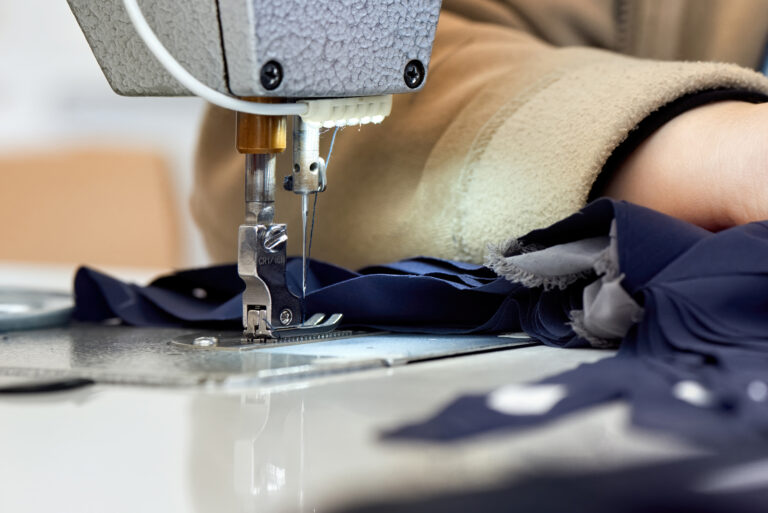The workwear industry is experiencing a significant shift toward sustainability, with manufacturers worldwide exploring new materials and eco-friendly production processes. As environmental concerns become more pressing, the demand for sustainable workwear materials is growing, offering innovative solutions that don’t compromise on performance or durability. Here’s a detailed look at what’s new in sustainable materials in the workwear industry.
1. Recycled Fabrics Making a Mark
One of the most exciting trends in sustainable workwear is the growing use of recycled fabrics. Manufacturers are increasingly turning to recycled polyester, nylon, and even recycled cotton to create durable, high-performance workwear. These materials are not only reducing waste but are also offering the same resilience as virgin fibers. The ability to recycle fabrics from old garments or post-consumer waste, such as plastic bottles, helps close the loop and significantly reduces the environmental impact.
With a rising demand for sustainability, workwear manufacturers are embracing recycled fabrics, turning discarded plastic bottles and old garments into robust, eco-friendly work clothing that still delivers the durability and performance workers need.
2. Organic Cotton and Natural Fibers
Organic cotton and other natural fibers, such as hemp, bamboo, and linen, are gaining popularity as sustainable alternatives to traditional workwear fabrics. These fibers require fewer pesticides and water resources to grow, reducing the environmental footprint compared to conventional cotton.
Testing these materials ensures they are durable enough to withstand tough work environments without sacrificing comfort.
Workers today can feel good about their gear, thanks to the rise of organic cotton and other natural fibers that offer a sustainable alternative without compromising on comfort, durability, or performance in demanding jobs.
3. Biodegradable Workwear Innovations
The search for even more sustainable options has led to the development of biodegradable workwear. Manufacturers are experimenting with fibers made from plant-based materials such as corn, mushrooms, and algae. These materials are not only renewable but also break down naturally at the end of their life cycle, minimizing waste in landfills. The challenge, however, lies in testing these fibers to ensure they meet performance standards for workwear without compromising on durability or safety.
Imagine workwear that decomposes naturally at the end of its life – biodegradable fabrics made from plants and algae are paving the way for a greener future, offering sustainable alternatives that help reduce the environmental burden of waste.
4. Waterless Dyeing Technologies
Traditional dyeing processes consume a massive amount of water and chemicals, which has a significant environmental impact. In response, some workwear manufacturers are adopting waterless dyeing technologies that use air or CO2 to infuse color into fabrics. This not only conserves water but also reduces energy consumption and pollution. The materials produced with these techniques maintain the rich color and durability needed for workwear, while leaving behind a smaller ecological footprint.
Waterless dyeing technology is revolutionizing the way workwear is produced, reducing water waste and harmful chemicals, while still ensuring vibrant, long-lasting colors that stand up to tough jobs.
5. Upcycled and Repurposed Materials
Upcycling is a growing trend in the sustainable manufacturing space. Workwear brands are now taking discarded textiles, including offcuts from previous production runs or pre-consumer waste, and repurposing them into new garments. This method helps to reduce waste and resource consumption while creating workwear that is as strong and reliable as new, virgin materials. This approach is also appealing because it adds a unique, eco-conscious touch to the final product.
By transforming discarded materials into high-quality workwear, upcycling is reducing waste while ensuring every garment is as strong and sustainable as it is stylish.
6. Bio-Based Leather Alternatives
For industries that require durable materials like leather for safety gear, such as boots or gloves, bio-based leather alternatives are gaining ground. These alternatives are made from plant-based materials like mushrooms, pineapples (Piñatex), and apples, providing an eco-friendly solution to traditional leather. These new materials are just as durable, breathable, and comfortable as animal leather, making them ideal for workwear that demands resilience without the environmental cost.
The demand for eco-conscious materials is reshaping safety gear, with bio-based leather alternatives like mushroom and pineapple fibers offering a cruelty-free, durable solution that’s tough on the job, but kind to the planet.
7. Closed-Loop Recycling for Workwear
Closed-loop recycling involves creating workwear from fully recyclable materials, ensuring that once the garment reaches the end of its lifecycle, it can be recycled back into new fibers.
Manufacturers are focusing on creating workwear products that can be returned, broken down, and transformed into new fabrics, significantly reducing waste and the need for virgin resources. Testing these materials involves ensuring that the fibers maintain strength and performance, even after going through the recycling process multiple times.
Closed-loop recycling is the future of sustainable workwear, where garments are fully recyclable, reducing waste and creating a circular economy that ensures workwear can be endlessly repurposed without losing performance or quality.
8. Water-Repellent and Fire-Resistant Sustainable Fabrics
Workwear that is both sustainable and protective is a critical need in industries like construction and firefighting. Manufacturers are developing water-repellent and fire-resistant fabrics that use plant-based or recycled materials. These fabrics maintain the high safety standards required for such industries while also being more eco-friendly. The challenge lies in balancing performance and sustainability, ensuring that these materials pass rigorous safety tests.
The next generation of workwear blends sustainability with safety, offering water-repellent and fire-resistant fabrics made from recycled and plant-based materials, ensuring workers stay safe without harming the environment.
Conclusion: A Greener Future for Workwear
As the global demand for sustainable products continues to rise, the workwear industry is stepping up to the challenge. By embracing eco-friendly materials, from recycled fibers to biodegradable fabrics, workwear manufacturers are creating products that not only protect workers but also protect the planet. These innovations are setting the stage for a future where workwear is both sustainable and high-performance, ensuring that the garments of tomorrow are as good for the environment as they are for those who wear them.
The workwear industry is embracing a greener future, as sustainable materials take center stage, offering durable, eco-friendly options that provide workers with the performance and protection they need while helping to preserve the planet.






